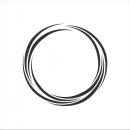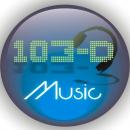Basic knowledge: Choosing Between Lavalier and Headset Mics
No one seems to know for certain when, in order to liberate a podium-bound pastor, Some innovative people connect the tether to a wired mic and created the first lavalier microphone. Proof by facts, due to the lavalier microphone is tiny and easy to carry, finally the lavalier mic had is widely used in the houses of worship.
The headset microphone had becomed popular and be used after the pop singer Janet Jackson pioneered the use of headset (headworn, earset) microphones. In the following days, the headset mic had used for houses of wordship.
HIXMAN offers lavalier and headset microphones, We introduce the difference between the lavalier mics and headset mics that can help you to decide which is best for your need.
Lavalier (Lapel) Microphones
lavalier mics were first the go-to solution for churches in the world. Due to the lav mics is tiny, easy to carry and hide. Its structural design is more suitable for wearing on clothes. And it can be worn on the body through clips, pins or ropes hanging around the neck.
Lavalier microphone's advantages:
Small and inconspicuous, easily to carry and hidden
Back electret condenser microphone.
Polar Patterns : omnidirectional and unidirectional
Use on Stage, Houses of Worship, Lecturers, dramas, broadcasts and Other Applications Requiring Minimum Microphone Visibility with hand-free Operation.
Even with these features, lavalier microphones still aren’t very popular with sound techs due to a number of audio challenges.
Since the controlled environment of a television studio is vastly different than the acoustics of a worship space, lavalier raise the potential for feedback and picking up room noise. Another issue is that sound levels can fluctuate with movements of the speaker’s head.
The most common type of pointing is an omnidirectional microphone, but a unidirectional microphone can be used to control environmental noise and severe echo problems. However, the inherent high sensitivity of the unidirectional lavalier microphone is very sensitive to respiratory airflow and touch noise. In particular, the spray of wheat caused by the breath produced by consonants "d", "t", and "k". The microphone can be placed slightly away from the mouth (but still facing the mouth), which can greatly reduce this effect.
Good use techniques of lavalier microphone include the following aspects:
Be sure to find the correct position and direction.
If necessary, be sure to use a blowout shield, which is especially important for unidirectional microphones.
Never exhale into the microphone or touch the microphone and cable.
Do not keep your head away from the microphone.
When using a podium microphone or a handheld microphone at the same time, be sure to mute the lavalier microphone. The voice must be very clear.
Headset (Headworn Earset) Microphones
At first, the headset microphone was very sturdy, and if used by too many people, it would tend to bend and deform. The first head-mounted microphone can only be worn on one side of the head or ears. Before the advent of the double roof beam solution, this was a major disadvantage.
Now the headset microphones are more popular than lavalier microphones in most church applications. But sound techs like them because they take care of just about all the problems experienced with lavalier microphones
Headset Microphone's advantages:
The mic arm can be adjusted freely reach the best effect of pickup the sound, near the speaker’s mouth.so the sound level and sound quality are consistent.
Balanced low-impedance output is more suitable for wired microphones, while headset microphones are usually used in wireless applications.
Lightweight design is comfortable for longtime adorn,will help the performers perform more perfect.
Polar Patterns : omnidirectional and unidirectional
There is no doubt that headset mics deliver a much more robust signal and markedly less feedback.
Good use of the headset microphone should include the following aspects:
Be sure to find the correct position and direction.
Be sure to adjust the microphone pole to wear it safely and comfortably.
Make sure the microphone head does not touch your face.
If necessary, use a blowout shield, especially for unidirectional microphones.
Adjust the dynamics of the human voice to make up for the characteristic that the distance from the microphone to the mouth is fixed.
Chris Huff from Church Production magazine puts it this way: “The right microphone in the hands of the presenter means the congregation hears clearly and understands their message without distraction.” And that is what should ultimately be driving your miking decisions for worship services.
No one seems to know for certain when, in order to liberate a podium-bound pastor, Some innovative people connect the tether to a wired mic and created the first lavalier microphone. Proof by facts, due to the lavalier microphone is tiny and easy to carry, finally the lavalier mic had is widely used in the houses of worship.
The headset microphone had becomed popular and be used after the pop singer Janet Jackson pioneered the use of headset (headworn, earset) microphones. In the following days, the headset mic had used for houses of wordship.
HIXMAN offers lavalier and headset microphones, We introduce the difference between the lavalier mics and headset mics that can help you to decide which is best for your need.
Lavalier (Lapel) Microphones
lavalier mics were first the go-to solution for churches in the world. Due to the lav mics is tiny, easy to carry and hide. Its structural design is more suitable for wearing on clothes. And it can be worn on the body through clips, pins or ropes hanging around the neck.
Lavalier microphone's advantages:
Small and inconspicuous, easily to carry and hidden
Back electret condenser microphone.
Polar Patterns : omnidirectional and unidirectional
Use on Stage, Houses of Worship, Lecturers, dramas, broadcasts and Other Applications Requiring Minimum Microphone Visibility with hand-free Operation.
Even with these features, lavalier microphones still aren’t very popular with sound techs due to a number of audio challenges.
Since the controlled environment of a television studio is vastly different than the acoustics of a worship space, lavalier raise the potential for feedback and picking up room noise. Another issue is that sound levels can fluctuate with movements of the speaker’s head.
The most common type of pointing is an omnidirectional microphone, but a unidirectional microphone can be used to control environmental noise and severe echo problems. However, the inherent high sensitivity of the unidirectional lavalier microphone is very sensitive to respiratory airflow and touch noise. In particular, the spray of wheat caused by the breath produced by consonants "d", "t", and "k". The microphone can be placed slightly away from the mouth (but still facing the mouth), which can greatly reduce this effect.
Good use techniques of lavalier microphone include the following aspects:
Be sure to find the correct position and direction.
If necessary, be sure to use a blowout shield, which is especially important for unidirectional microphones.
Never exhale into the microphone or touch the microphone and cable.
Do not keep your head away from the microphone.
When using a podium microphone or a handheld microphone at the same time, be sure to mute the lavalier microphone. The voice must be very clear.
Headset (Headworn Earset) Microphones
At first, the headset microphone was very sturdy, and if used by too many people, it would tend to bend and deform. The first head-mounted microphone can only be worn on one side of the head or ears. Before the advent of the double roof beam solution, this was a major disadvantage.
Now the headset microphones are more popular than lavalier microphones in most church applications. But sound techs like them because they take care of just about all the problems experienced with lavalier microphones
Headset Microphone's advantages:
The mic arm can be adjusted freely reach the best effect of pickup the sound, near the speaker’s mouth.so the sound level and sound quality are consistent.
Balanced low-impedance output is more suitable for wired microphones, while headset microphones are usually used in wireless applications.
Lightweight design is comfortable for longtime adorn,will help the performers perform more perfect.
Polar Patterns : omnidirectional and unidirectional
There is no doubt that headset mics deliver a much more robust signal and markedly less feedback.
Good use of the headset microphone should include the following aspects:
Be sure to find the correct position and direction.
Be sure to adjust the microphone pole to wear it safely and comfortably.
Make sure the microphone head does not touch your face.
If necessary, use a blowout shield, especially for unidirectional microphones.
Adjust the dynamics of the human voice to make up for the characteristic that the distance from the microphone to the mouth is fixed.
Chris Huff from Church Production magazine puts it this way: “The right microphone in the hands of the presenter means the congregation hears clearly and understands their message without distraction.” And that is what should ultimately be driving your miking decisions for worship services.
Responder
Citar








